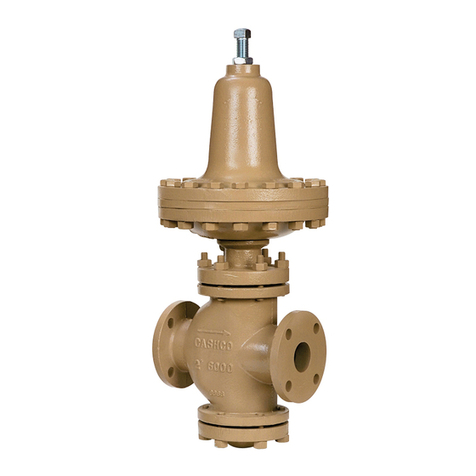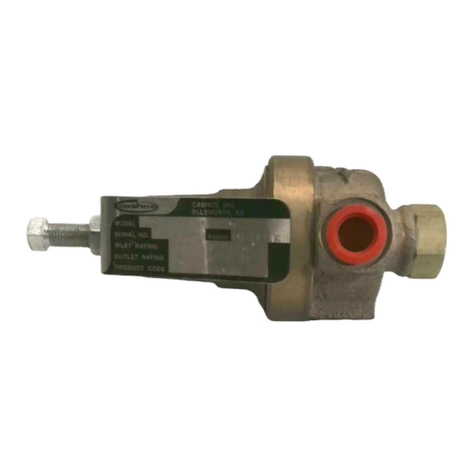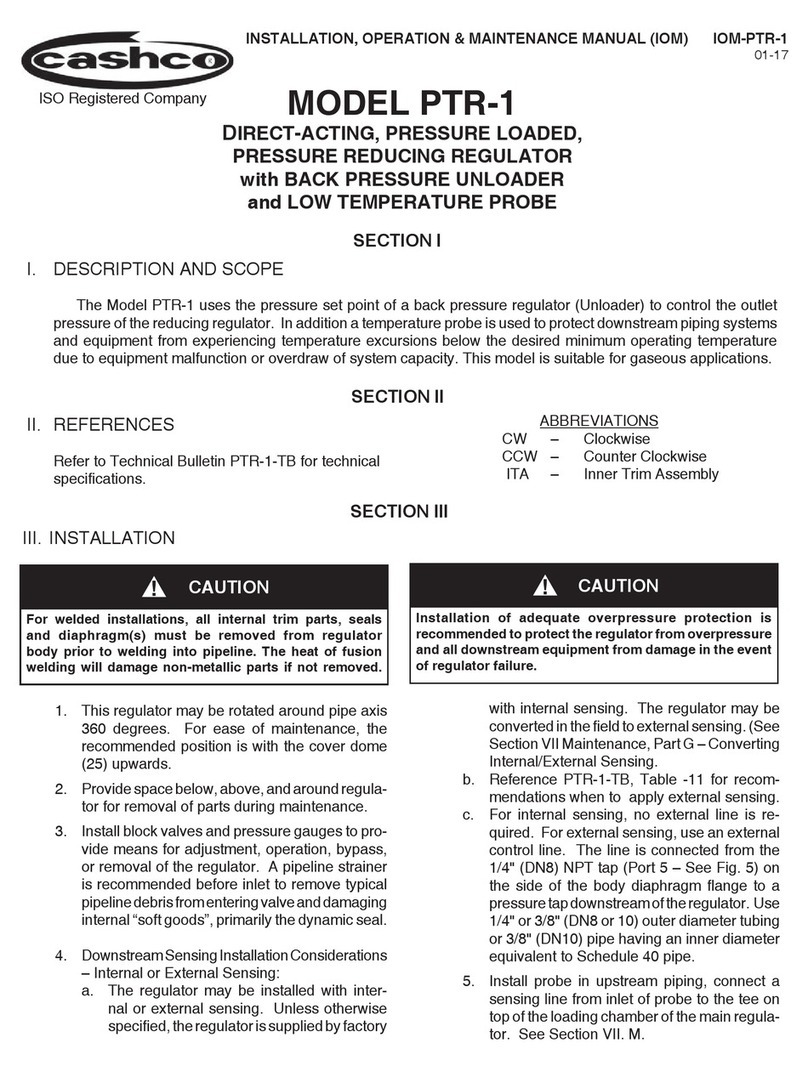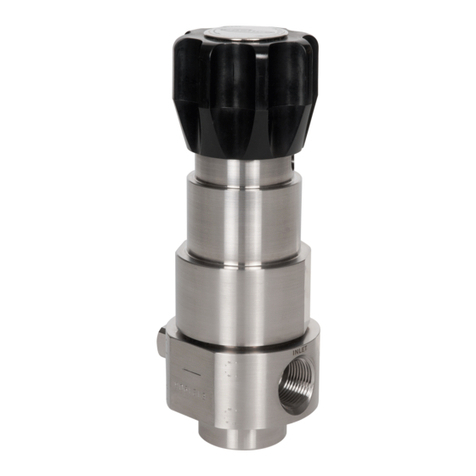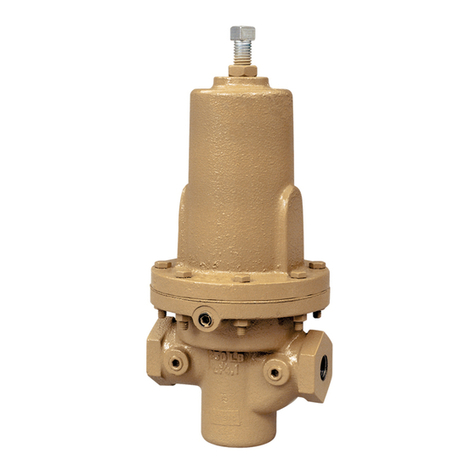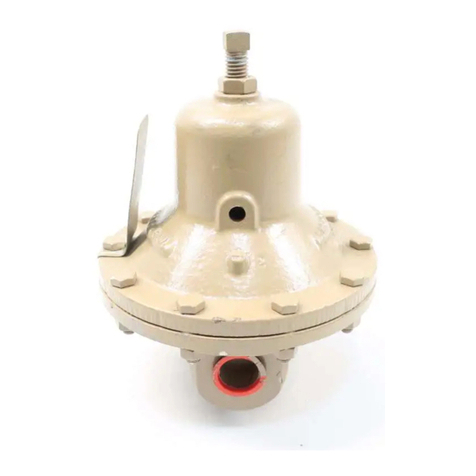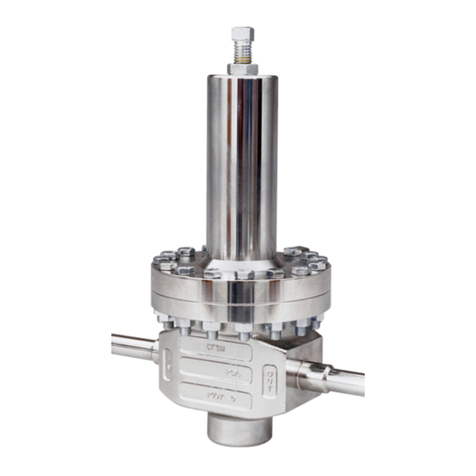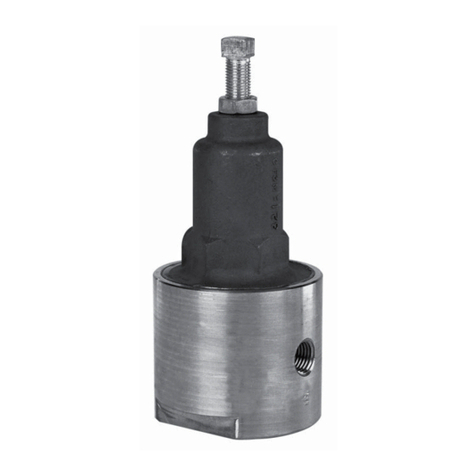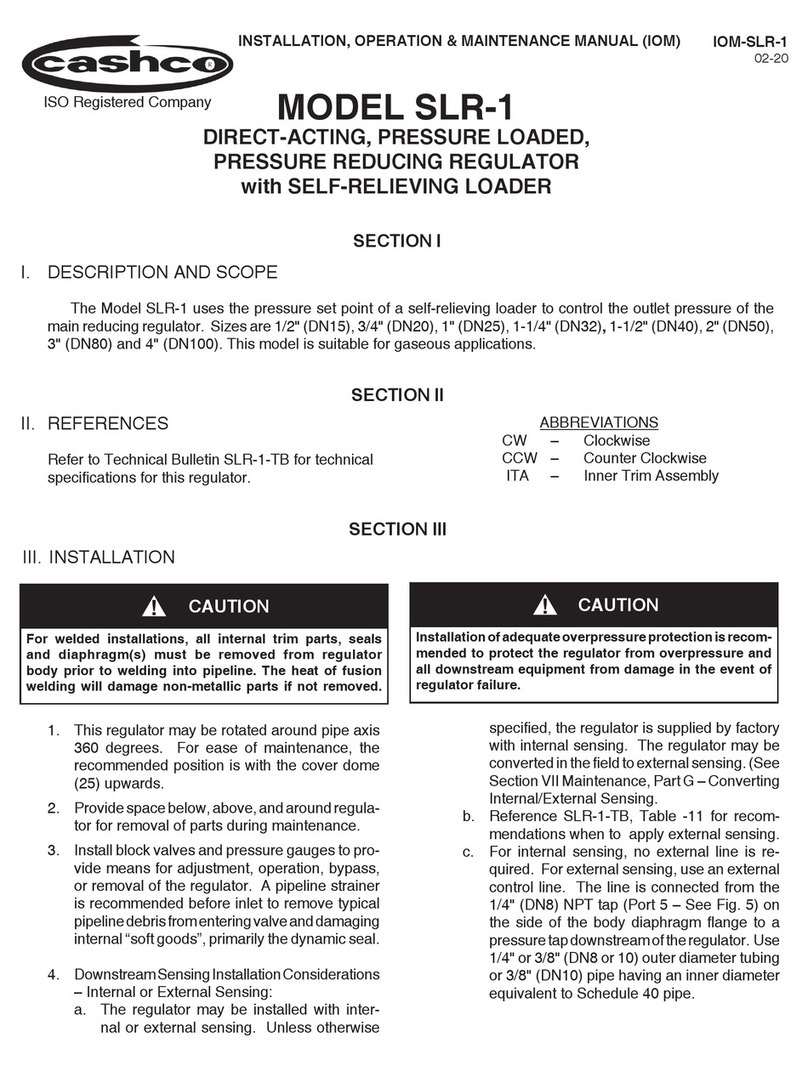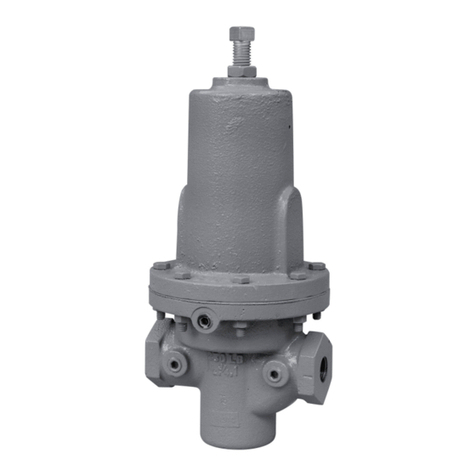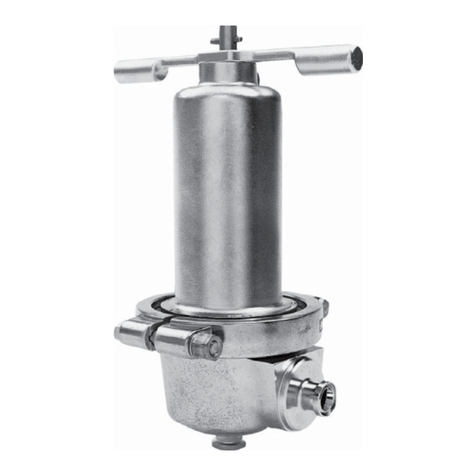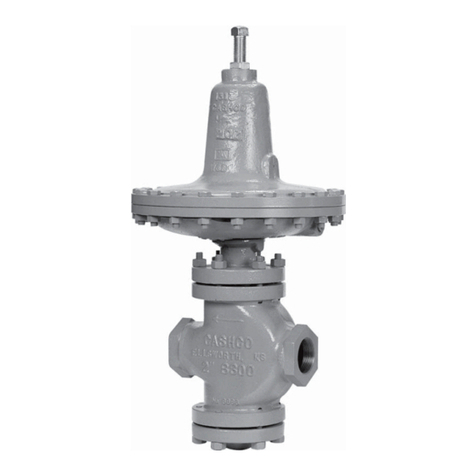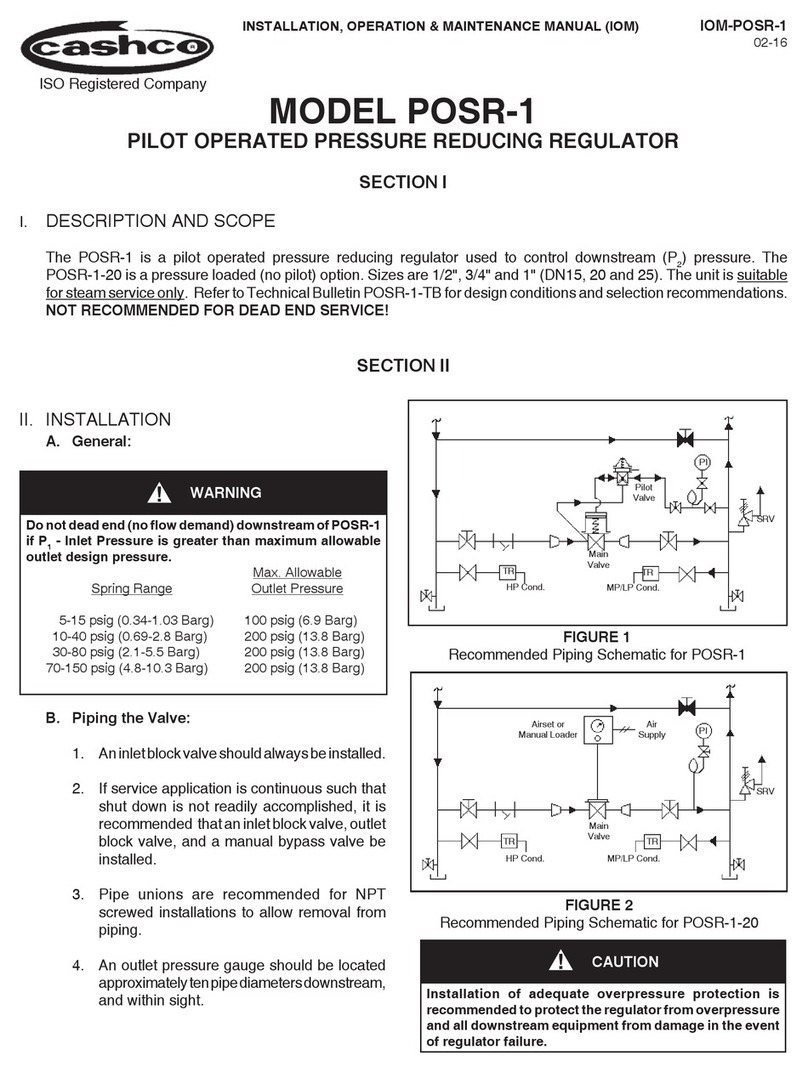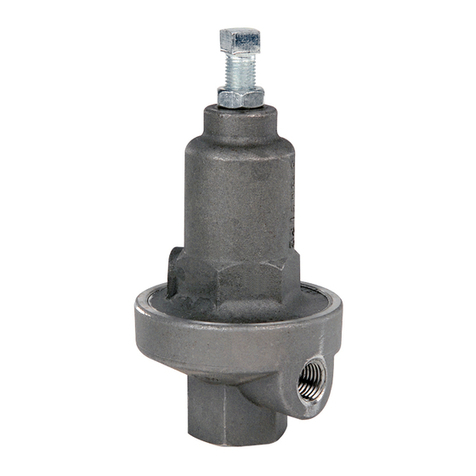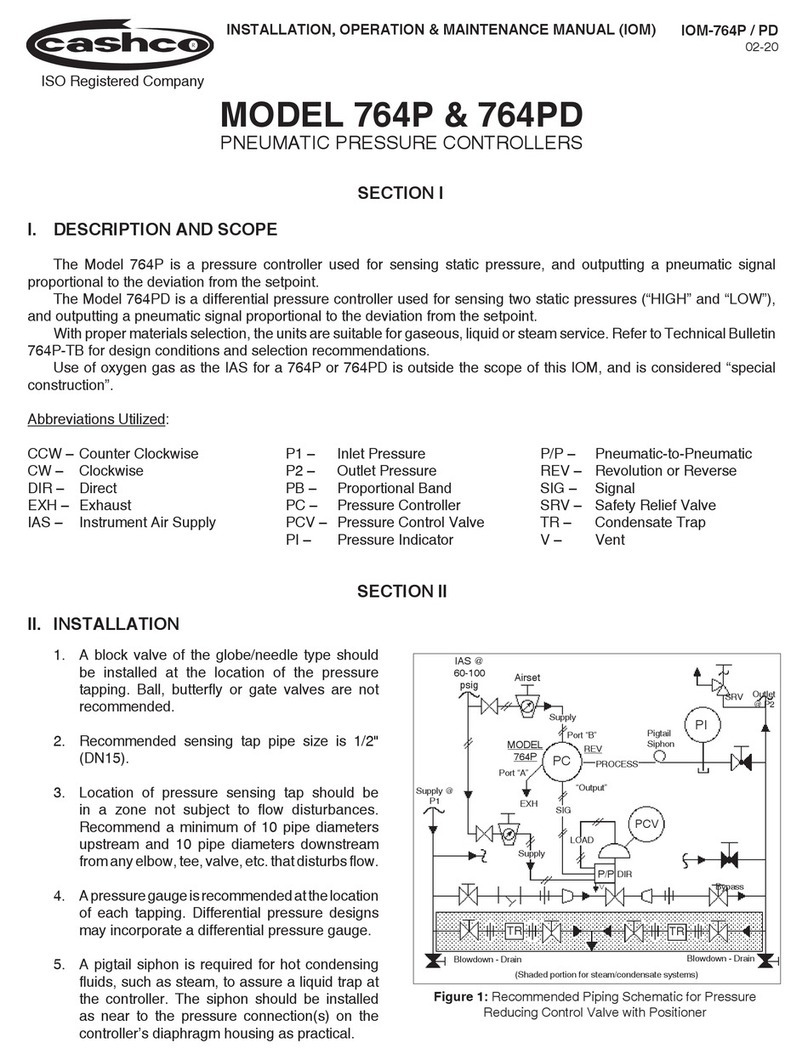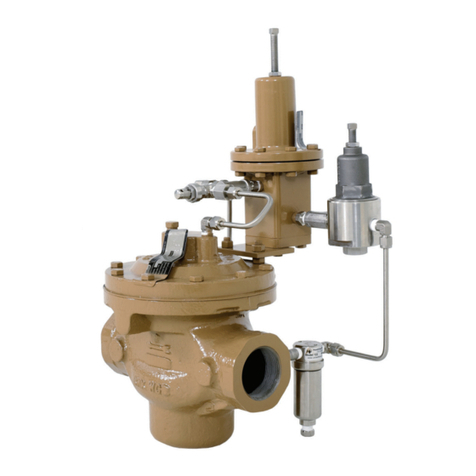
IOM-DA2 9
c. Type CW:
1. Stretch o-ring energizer/seal (27.2)
over lower circumference of piston-
guide bearing (13), taking care not to
“cut” o-ring energizer/seal (27.4). Us-
ing thumbs, work the o-ring energizer/
seal (27.4) up and into the groove of
the piston-guide bearing (13). NOTE:
A very slight amount of fluid and elas-
tomer compatible o-ring lubricant is
recommended as an installation aid.
2. Place wiper washer (17.1) into cage
(19). Allow wiper washer (17.1) to
rest on bottom of cage (19). Insert
wiper seal (16) into cage (19) at an
approximate 45° angled approach.
The turned-down lip of wiper seal (16)
entering cage (19) first. Rotate wiper
seal (16) and wiper washer (17.1) to a
level position approximately half way
down into cage (19). The serrated
face of the wiper washer (17.1) must
contact the lower face of the wiper
seal (16) when the valve plug (20) is
inserted into the cage (19).
3. Position TFE cap seal (27.1) ring
with rectangular cross-section at
end of piston-guide bearing (13).
Stretch cap seal (27.1) over lower
end of piston-guide bearing (13) using
thumbs to work the cap seal (27.1)
onto the piston-guide bearing (13).
DO NOT USE A TOOL FOR THIS
STEP. Continue pressing cap seal
(27.1) upwards towards the groove
until the cap seal (27.1) “snaps” into
the groove of the piston-guide bearing
(13).
4. Position piston-guide bearing (13)
over and into upper end of cage (19)
until the cap seal (27.1) edge touches
the upper lip of the cage (19). While
gently applying force to press the
piston-guide bushing (13) into the
cage (19), simultaneously use fingers
to lightly press the cap seal (27.1)
inwards into the groove of the piston-
guide bearing (13) until the cap seal
(27.1) “slips into” the cage (19). DO
NOT USE TOOLS, LUBRICANT, OR
HEAVY FORCE TO ENGAGE THE
CAP SEAL (27.1) INTO THE CAGE
(19).
d. Type PW:
1. Place wiper washer (17.1) into cage
(19). Allow wiper washer (17.1) to rest
on bottom of cage (19). Insert wiper seal
(16) into cage (19) at an approximate
45° angled approach. The turned-down
lip of wiper seal (16) entering cage (19)
first. Rotate wiper seal (16) and wiper
washer (17.1) to a level position ap-
proximately half way down into cage
(19). The serrated face of the wiper
washer (17.1) must contact the lower
face of the wiper seal (16) when the
valve plug (20) is inserted into the cage
(19).
2. NOTE: Piston ring assy (27.5) consists
of one metal corrugated energizer and
two piston ring seals. Wrap corrugated
metal piston ring energizer into the
groove of piston-guide bearing (13).
3. Spread a piston ring seal and slide over
lower circumference of piston-guide
bearing (13). Using thumbs and fin-
gers, work the piston ring seal into the
groove of the piston-guide bearing (13).
Repeat this procedure with a second
piston ring seal. Orient the Z-cuts in
the piston ring seals 180 degrees apart
to minimize leakage by the piston ring
assembly.
4. Position piston-guide bearing (13) over
and into upper end of cage (19) until
the lower piston ring seal touches the
upper lip of the cage (19). While gently
applying force to press the piston-
guide bearing (13) into the cage (19),
simultaneously use fingers to lightly
circumferentially press the piston ring
assembly (27.5) inwards into the
piston-guide bearing (13) groove until
the piston ring assembly (27.5) “slips
into” the cage (19).
e. Type UC:
1. Insert seal retainer (17.3) into top of
cage and allow to rest in bottom of the
cage.
2. Position u-cup seal (27.3) over lower
circumference of piston-guide bear-
ing (13). Ensure that the u-cup seal
(27.3) is oriented with the center-open-
downwards as shown in Figure 1. The
u-cup seal (27.3) depends upon the
P1-Inlet Pressure to activate the seal
for proper sealing action.

